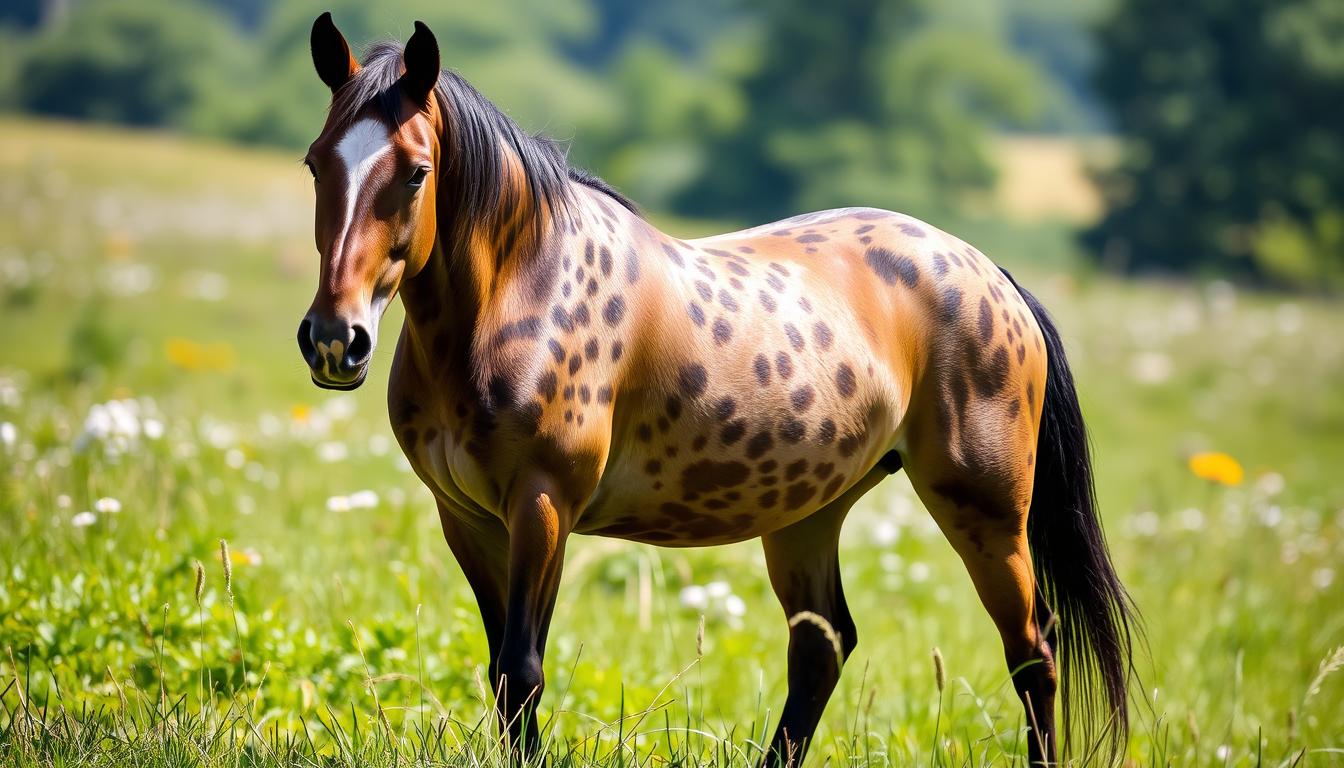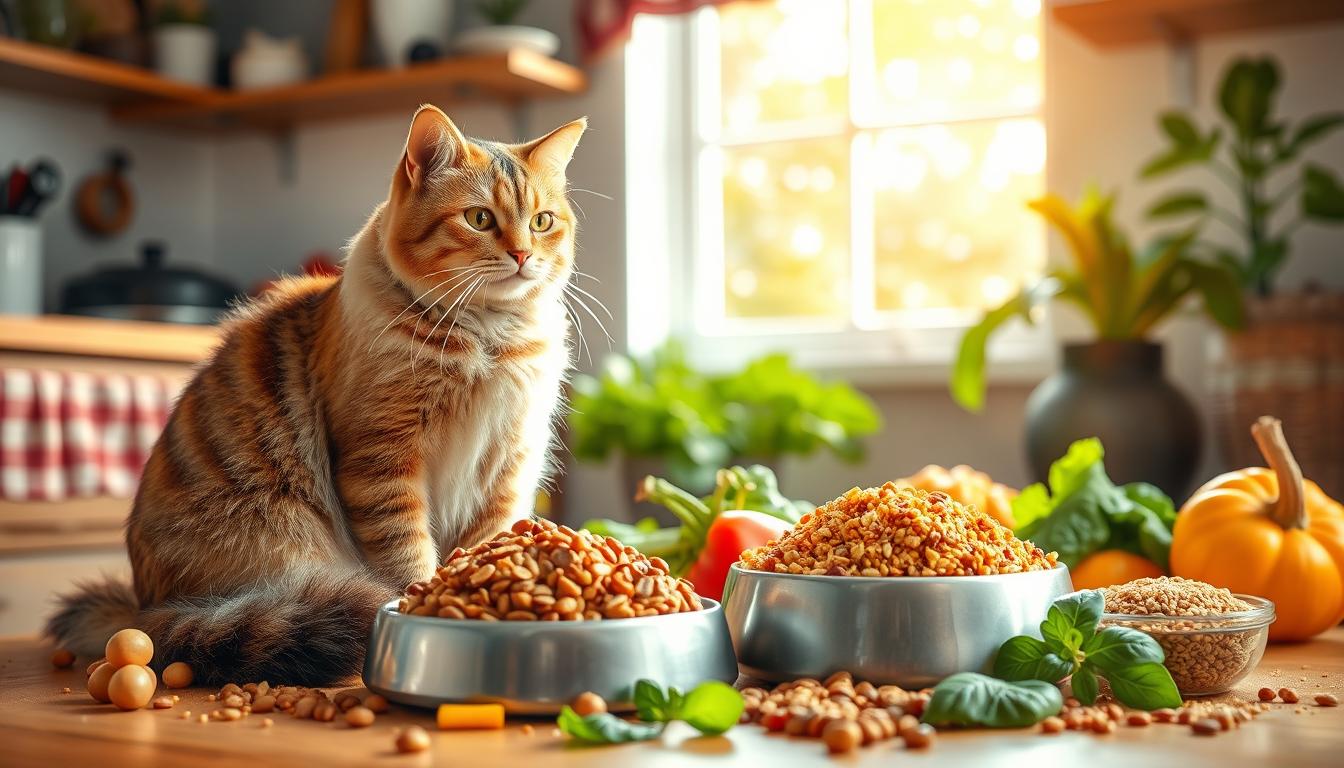White Chinchilla: Adorable Exotic Pets
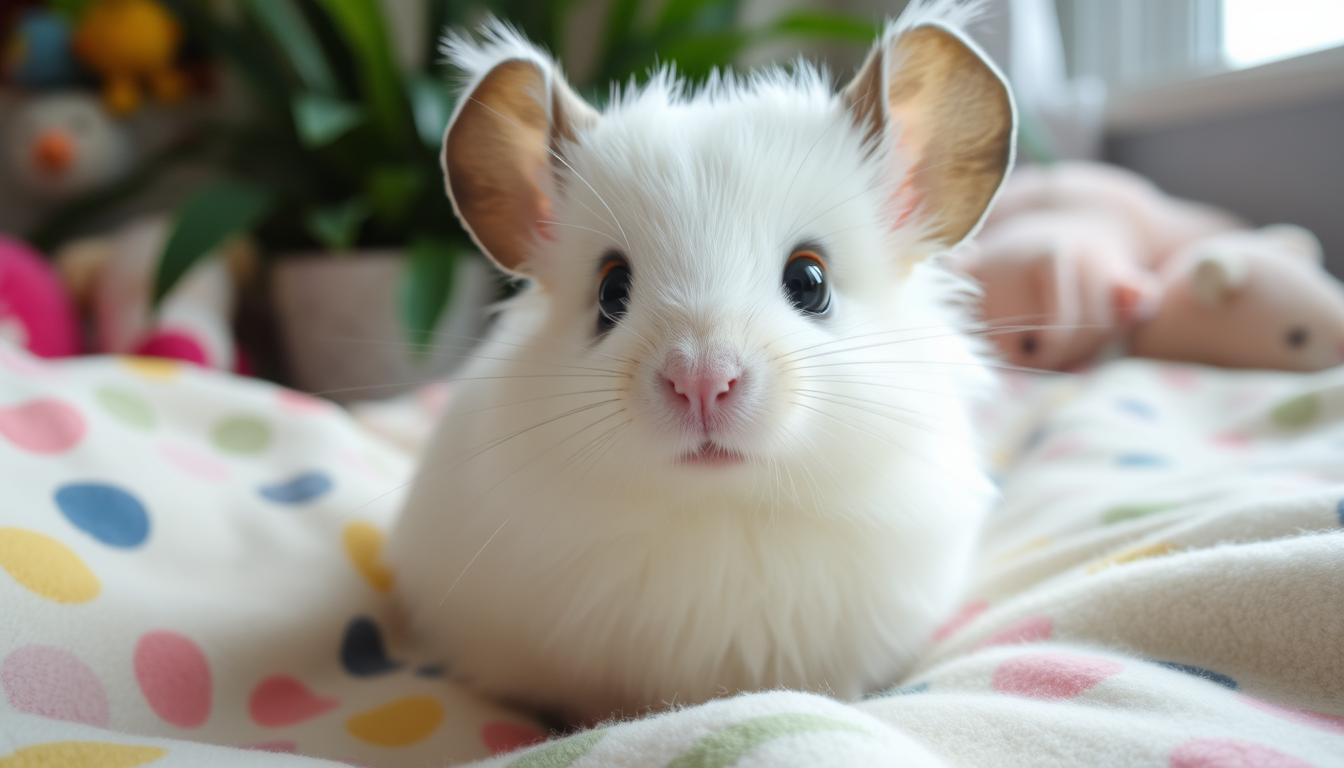
White chinchillas are becoming more popular as pets. They are known for their soft fur and charming nature. These pets are rare, with only one in 20 having white fur1.
Originally from Chile’s Andes, they have become beloved pets. They now live in American homes, far from their wild origins.
Key Takeaways
- Understanding the rich background of the white chinchilla highlights its unique place among exotic pets.
- Despite their plush appearance, chinchillas’ care goes beyond aesthetics, calling for specialized attention to their emotional and environmental needs.
- As cute chinchilla videos populate social media, it’s vital to consider the comfort and well-being of these small rodents during the video creation process.
- Ensuring white chinchillas thrive includes maintaining an ideal temperature ranging from 55-80 degrees Fahrenheit and humidity below 50%1.
- Chinchillas are inherently social creatures, requiring adequate affection and attention to prevent stress and ensure their health and happiness.
The Unique Allure of the White Chinchilla
The white chinchilla is a stunning sight for those who love exotic pets. Their fur is incredibly soft, 30 times softer than human hair. This makes them a joy to touch and adds to their cute chinchilla charm.
Thinking about getting a white chinchilla? Their fur prices vary a lot. They can start at $2,500 and go up to $25,000 USD. This shows how rare and special they are.
Chinchillas come from the dry Andes mountains, adding to their exotic charm2. Their thick fur, with up to 190 hairs per square millimeter, keeps them warm. This trait makes them look even more adorable.
However, there are concerns about chinchilla fur farming. The limited supply of real chinchilla fur keeps prices high. If you love exotic pets, think carefully before getting a cute chinchilla. Choosing a pet chinchilla is a kinder choice than wearing their fur.
Learn more about keeping your pet chinchilla happy and healthy in our guide on The Ultimate Guide to Keeping Pet.
Understanding the Origin of Chinchillas
Chinchillas have traveled from the Andes mountains to our homes. This journey shows their amazing ability to adapt and their lasting charm. If you’re thinking about getting a chinchilla, knowing where they come from helps you understand their needs and behaviors.
The Andes Mountains: Home of the Chinchilla
Chinchillas are from the Andes Mountains, living at high elevations. The air is thin and the environment is tough3. They live in mountain shrubs and grasslands, adapting to extreme conditions. Their fur is the densest of any land mammal, keeping them warm4. Their fur is also very valuable3.
From Wild Herds to Domesticated Companions
Chinchillas have moved from the Andes to domestic homes. In the wild, they live in groups called “herds” with up to 100 members4. These groups are key to their survival and social structure, showing the importance of social interaction for domesticated chinchillas.
The fur trade led to a big drop in chinchilla numbers. In Chile, conservationists and pet lovers are working to protect and breed them responsibly4. Today, the pet trade promotes chinchillas, but they need lots of exercise and special care to stay healthy4. Adopting them gives them a safer life away from the dangers of the wild.
Knowing where chinchillas come from enriches your experience as a caretaker. Whether you want to adopt or just appreciate them, their history shows their resilience and charm. This makes them fascinating pets.
Is a Chinchilla Pet Right for You?
Getting a chinchilla as a pet is more than just adding a cute friend. It’s about understanding their care and emotional needs. You must also know how to meet their behavior.
Assessing Emotional and Environmental Needs of Chinchillas
Chinchillas need a loving and stable home. They can get sick if they’re lonely or stressed. Their natural habitat is key to their happiness, with lots of space and quiet.
The Significance of Social Interaction for Chinchillas
Chinchillas love to be around others. They come from a group-living background. They need lots of social interaction, whether it’s with humans or other chinchillas.
Chinchillas can do well alone if you give them lots of attention. But, if you’re thinking of getting two, a young one with an older chinchilla of the same sex might work best5.
| Age Group | Emotional Needs | Social Requirements |
|---|---|---|
| 2-3 weeks | High care, unpredictable temperament | Mostly dependent on parent |
| 3-5 months | Needs stability, entering rebellious stage | Requires attentive interaction |
| 6-8 months and older | Begins to calm, temperament stabilizing | Can benefit from companions if socialized properly5 |
It’s important to understand chinchilla behavior and their need for a supportive home. Setting up a peaceful space and spending time with them is a big commitment. But, it’s also very rewarding.
Learn more about the chinchilla environment and responsible care. Make sure your lifestyle fits their unique needs.
The Aesthetics of a White Chinchilla: Beyond Cuteness
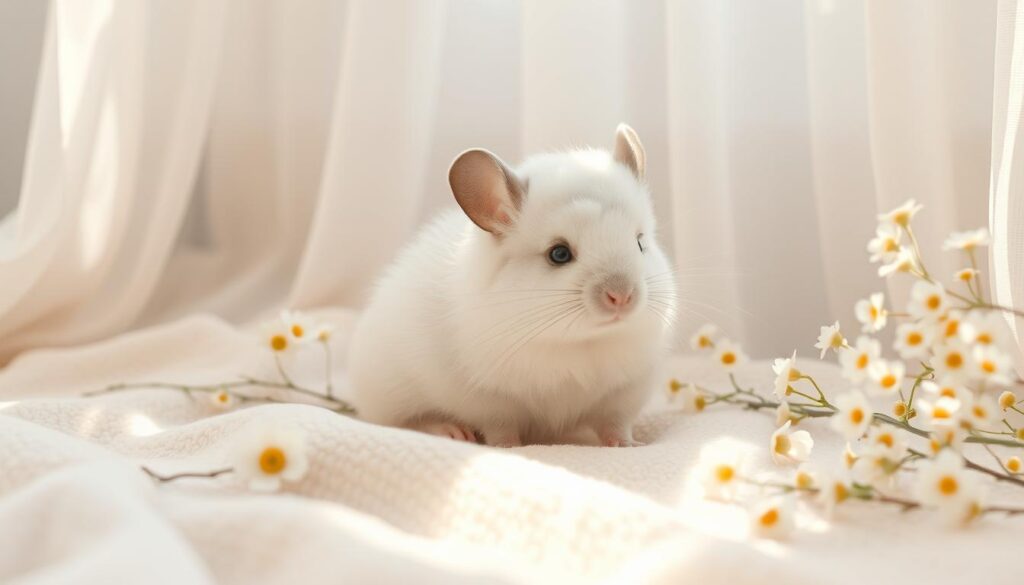
The white chinchilla’s beauty goes beyond just being cute. Their fur is soft and luxurious, giving them a unique aesthetic appeal. This makes them a stunning addition to any home. Their fur’s color dazzles with purity and adds a rich texture that animal lovers find captivating.
What makes white chinchillas special is not just how they look. It’s also their interesting behaviors and care needs. For example, regular dust baths keep their fur silky, showing off their aesthetic appeal.
- Price point for care supplies remains approachable: the list price is US $163.28, but with a 76% discount, the item price drops to an affordable US $38.626.
- Ensuring a spacious living environment adds to their regal presentation; one suitable product available offers dimensions of 18×18 inches, ideal for a comfortable chinchilla enclosure6.
- Attention to dietary preferences and the social nuances of the white chinchilla—such as their dynamic with siblings or preference for solitude—mirrors the effort needed to preserve their visual and physical well-being.
The aesthetic appeal of the white chinchilla is also seen in their behavior. For example, Lulu, a white chinchilla, moves with grace and tranquility. This adds to their charm and shows their complexity as pets7.
In conclusion, having a white chinchilla is more than just a pet. It’s a chance to see a world of beauty and fascinating behaviors. Their unique looks and engaging habits make them a great choice for pet lovers who want a pet with charm and character.
Creating a Safe and Nurturing Chinchilla Habitat
To make sure your chinchilla is happy, you need to create a space that feels like their home in the Andes. This means keeping the temperature between 15-21°C. This is key for their health and happiness8.
Optimal Living Conditions for Chinchillas
Chinchillas love to move and play. They need to get out of their cage often to stay healthy and happy8. Adding a sand bath area helps keep their fur clean and lets them groom naturally8.
What they eat is also very important. They need lots of hay, fresh greens, and special chinchilla pellets8. But, they should not have sugary or high-fat foods to avoid health problems8.
| Feature | Description | Importance |
|---|---|---|
| Temperature Control | 15-21°C | Prevents stress and health risks |
| Exercise | Regular out-of-cage activities | Maintains physical health and mental well-being |
| Nutrition | Hay, greens, pellets | Essential for proper digestion and health |
| Grooming | Sand baths | Keeps fur clean and healthy |
To make their life even better, keep their area quiet and dim at night. This helps them sleep well. Also, give them toys and spend time with them to keep them happy and engaged8.
If you want to learn more about making your pet’s life better, check out this resource on pets. It talks about the playful nature and special needs of pets like chinchillas.
By following these tips, you can make a great home for your chinchilla. It will be a place where they can thrive and enjoy their life with you.
Caring for Your Chinchilla: Tips and Best Practices
Chinchillas need special care to stay healthy. Keeping their fur clean and feeding them right are key. This helps them thrive.
Addressing the Needs of Your Chinchilla’s Thick Fur
Keeping your chinchilla’s fur clean is crucial. They need regular dust baths to stay fluffy9. Use special chinchilla dust to clean their fur.
Also, make sure their home is clean and well-ventilated9. Chew toys help keep their fur healthy by keeping their teeth in check9.
Dietary Considerations for Optimal Health
Feeding your chinchilla right is vital. Give them high-quality hay and pellets for nutrients10. Watch their treat intake to avoid health problems9.
Always have fresh water available. Use big water bottles that change often to keep them hydrated10.
| Care Aspect | Description | Frequency |
|---|---|---|
| Dust Baths | Maintenance of thick fur using special chinchilla dust | 2-3 times per week |
| Diet | High-fiber hay and nutritionally balanced pellets | Daily |
| Chew Toys | Provide a variety for dental health and entertainment | Regularly replace as needed |
Following these care tips will keep your chinchilla healthy. For more info, check out useful chinchilla care resources9.
Albino Chinchilla Facts: Understanding Genetic Variants
Albino chinchillas are known for their pure white fur and lack of color. They have red eyes and snowy fur, making them stand out. Their genetic mutation means they lack pigment, unlike their gray relatives.
Learning about their genetics helps us understand their beauty and needs. Their lack of color is not just for looks; it shows their genetic uniqueness. This trait is found in about 20 color variants of domesticated chinchillas, unlike the gray of wild ones1112.
When breeding albino chinchillas, it’s crucial to consider their health. Breeding two white chinchillas can lead to genetic problems11. This highlights the importance of knowing chinchilla genetics to ensure healthy babies.
“Albino chinchillas are rare and need special care to stay healthy and active. Their unique look and needs make them a challenge but also a joy to care for.”
Albino chinchillas have many needs similar to their darker friends. They need a cool, not too humid place to live. The ideal temperature is between 55-80 degrees Fahrenheit, with humidity below 50% to prevent health issues11.
| Color Variant | Required Care | Temperature Range |
|---|---|---|
| Standard Grey | Regular dust baths, minimal handling | 55-80°F |
| Albino (White) | Increased supervision, sensitive to light | 55-75°F |
Albino chinchillas need lots of space to move around. Their enclosures should have levels and ramps for climbing and jumping. Since they are social, they need lots of attention and interaction, making them unsuitable for owners who are away often11.
Thinking about getting an albino chinchilla? Remember, they need extra care but offer lots of joy and companionship. Their unique look and genetic trait make them interesting to study and a wonderful pet for those willing to meet their needs.
Locating Reputable Chinchilla Breeders
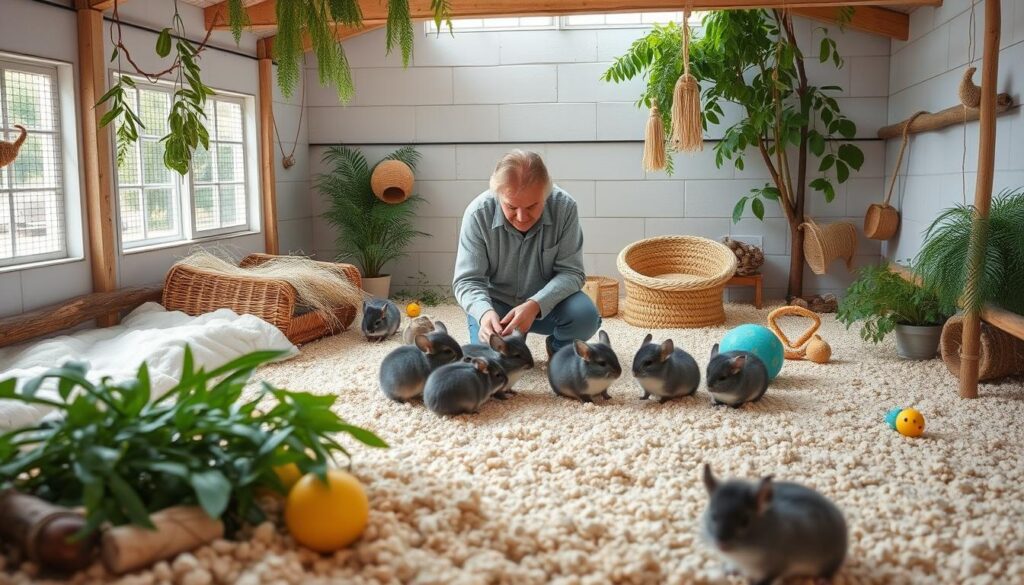
Ready to bring a chinchilla home? It’s more than just a pet store visit. Finding a reputable breeder is key for the chinchilla’s health and happiness. They offer a healthy pet and support, making a great future for both the chinchilla and its owner.
The Importance of Ethical Breeding Practices
Good chinchilla breeders care deeply about the animals. They provide big spaces, right food, social time, and medical care. This stops health and behavior problems. It means the chinchillas are healthy and happy at home.
Look for breeders who guarantee their chinchillas and offer support. This shows they really care about the chinchillas’ well-being13.
Adoption Terms and Finding the Perfect Match
Adopting a chinchilla is rewarding. First, learn about the adoption terms. They help find the right home for the chinchilla. Make sure the chinchilla fits your lifestyle, whether it’s calm or active.
Check pet stores’ breeding standards and health promises. These show how well the chinchillas were raised13.
Before adopting, get the right supplies. A strong cage, safe bedding, and fun toys make a happy home for your chinchilla. This helps them settle in well13.
| Supply Type | Description | Importance |
|---|---|---|
| Cage | Spacious and secure | Essential for safety and comfort |
| Bedding | Safe and absorbent materials | Crucial for cleanliness and odor control |
| Toys | Chewable and engaging | Important for mental stimulation and dental health |
Conclusion
Welcoming a white chinchilla pet into your home is a big step. It’s important to know all about the care and responsibilities involved. These adorable creatures come from the cool mountains of South America, bringing a piece of nature into your home14.
Chinchillas are most active at night and like to be alone. If you have more than one, you’ll need to make sure they get along and have their own space15. They live a long time and need big, open spaces to roam around in. They also need regular dust baths to keep their fur looking great16.
If you’re looking to buy or adopt a chinchilla, make sure to get it from a good breeder or adoption center. This ensures they’ve been raised with care. White chinchillas, like the White Mosaic or Pink White, can cost up to $300 because they’re rare. You’ll need to think about the cost of food, vet visits, and keeping their habitat clean for a long time14.
A white chinchilla can be a wonderful pet if you’re ready to meet their needs. They need a cool place to live, a way to manage their night activities, and to keep them from getting too hot. You’ll also need to learn about their social needs and what they eat, based on their Andean home1614.
By following these care tips and being ethical in your ownership, you can give your chinchilla a happy life. This shows you respect their natural world and their place in it14.
FAQ
What is the appeal of a white chinchilla?
Where do chinchillas originally come from?
How were chinchillas domesticated?
What are the emotional and environmental needs of chinchillas as pets?
Why is social interaction important for chinchillas?
How do I create a suitable habitat for my chinchilla?
What does chinchilla care entail, especially for their fur?
What should I feed my chinchilla for optimal health?
How are albino chinchillas different from other chinchillas?
Why is it important to find reputable chinchilla breeders?
What should I consider before adopting a chinchilla?
Source Links
- https://qualitycage.com/blogs/news/chinchilla-colors?srsltid=AfmBOoolwuiPH9HiM8rgNI-kJy-IhS5y7IDW4U5bdvhxI8VaorlnstPT – Exploring Chinchilla Colors: How it Affects Health & More
- https://furbysd.com/collections/chinchilla?srsltid=AfmBOop15vpB3zjZp_HCS9eTM5jQCsNlNUXXdL3yQ2JM5r8YYufYA6r2 – Chinchilla
- https://animaldiversity.org/accounts/Chinchilla_chinchilla/ – Chinchilla chinchilla (short-tailed chinchilla)
- https://en.wikipedia.org/wiki/Chinchilla – Chinchilla
- https://www.tiffanyschinchillas.com/choosingapet – Choosing A Pet Chinchilla | Carolina Chinchilla
- https://www.ebay.com/itm/405241929882 – SAFAVIEH 20-inch Faux Chinchilla Snow White Decorative Snow White 20″x20″ 46655455468 | eBay
- https://lychinchillas.com/tag/dust-baths/ – dust baths – LY Chinchillas
- https://chinchillapet.info/chinchilla-care/ – Complete Guide to Chinchilla Care: Expert Tips & Advice
- https://www.thesprucepets.com/chinchillas-a2-1238558 – Chinchillas Are the Softest Pet, But Are They Right For You?
- https://lychinchillas.com/tag/care/ – care – LY Chinchillas
- https://qualitycage.com/blogs/news/chinchilla-colors?srsltid=AfmBOoql1dxzGmr_7aGXsUYeLQs7sqBvrj2bBVuM4vl0eQPjlqEHAAgU – Exploring Chinchilla Colors: How it Affects Health & More
- https://www.sunshinechinchillas.com/chinchilla-colors-mutations – Short-tailed vs. Long-tailed
- https://qualitycage.com/blogs/news/chinchillas-for-sale-near-me?srsltid=AfmBOoooDACefRWK8Cqj2kWDptDwEXOlyElVPA0sglL9xicHgxSMPpfu – Chinchilla Near Me: The Best Places to Find Your New Furry Friend
- https://animalsandhope.com/the-white-chinchilla-what-you-should-know/ – The White Chinchilla: What you should know
- https://lychinchillas.com/tag/motherhood-2/ – motherhood – LY Chinchillas
- https://www.theveterinarynurse.com/content/clinical/chinchilla-husbandry-an-overview-of-correct-care/ – Chinchilla husbandry: an overview of correct care – The Veterinary Nurse

